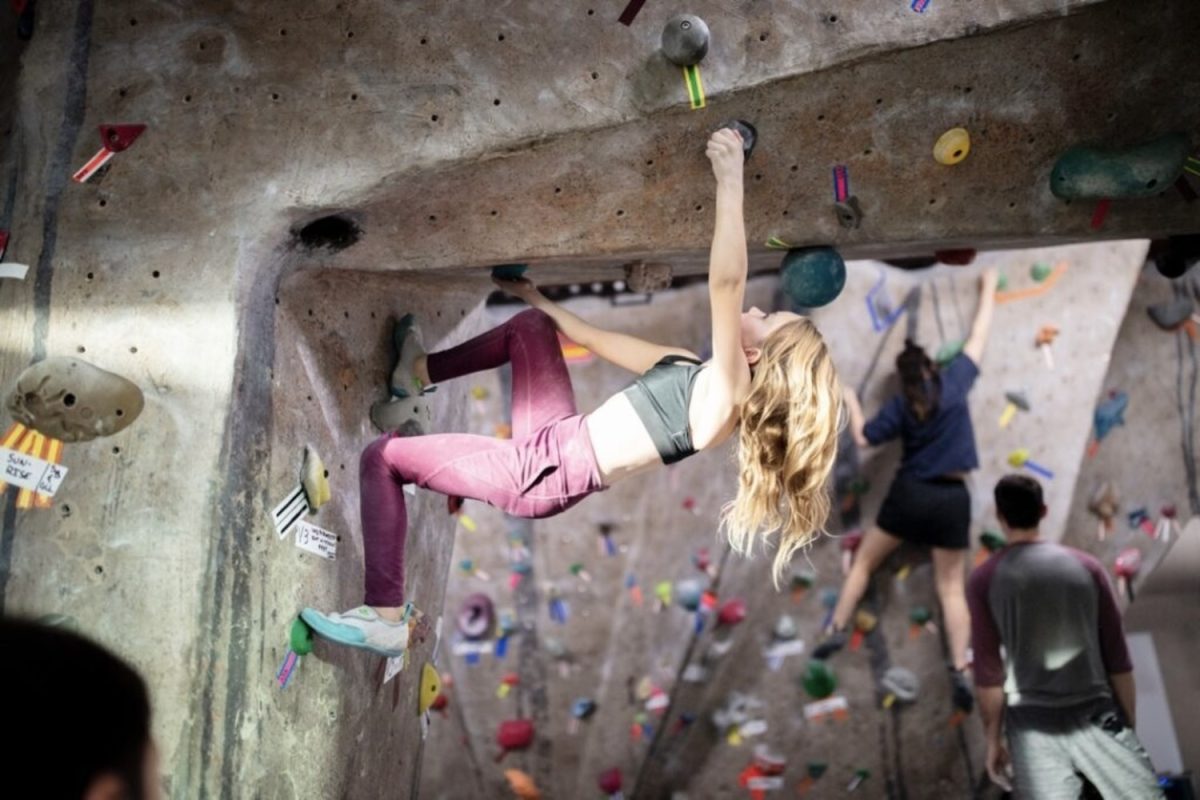The indoor climbing industry has boomed in the past few years, with a 76% increase in the number of climbing gyms in the United States from 2014 to 2023.
Over the last decade, interest in rock climbing and bouldering has steadily increased. Sport Climbing debuted at the 2020 Tokyo Olympics, where American Nathaniel Coleman won silver in men’s combined. Popular 2018 films like “The Dawn Wall,” starring Tommy Caldwell, and “Free Solo,” a movie starring Alex Honnold, which won Best Documentary at the 2019 Oscars, have helped bring climbing to a global audience.
“I started climbing about three years ago after watching its debut in the Tokyo Olympics. I was drawn to the way that the athletes were able to find various ways to scale challenging routes depending on their strengths, height, or other factors,” said Alex Lu, a high school competitor at Movement Belmont, a rock-climbing gym.
The sport’s origins can be traced back to the late 1800s when mountaineers started scaling steep and complex rock faces to reach the summit. Early climbers used primitive equipment, like hemp ropes and wooden pegs, and their physical strength and skill to complete such daring and impressive ascents. As the sport evolved, climbers started using anchors and other tools to increase safety and allow them to take on more challenging climbs.
The first rendition of an indoor climbing wall was created at the University of Leeds in England in 1968. Original climbing walls comprised rocks cemented into brick walls or drilled onto a wooden board just a few meters above the ground. Today’s climbing gyms are custom-built, often utilizing steel framing and sculpted modular panels, adding complexity and diversity to a climber’s various routes.
From humble origins, climbing has become a multi-billion-dollar industry, with four million climbers in the U.S. and over 800 climbing gyms. Modern climbing gyms have become multifaceted organizations that go beyond indoor climbing, including yoga classes, social and activity rooms, plastic rock walls, and traditional gym facilities.
David Dunlap, the Head Coach at Movement Belmont, shared his thoughts on how the sport has evolved in the last decade.
“We’re increasingly seeing people who are not interested in climbing outside and many who interact with the sport as their main method of socialization, competition, or simple exercise. As the sport’s demographics widen, the gyms have had to adapt to a larger audience to maintain this growth and retain their member base. Many new climbers are not outdoor experts or even athletes; as such, the experience that the biggest commercial gym chains provide tries to cater to every type of climber who could come through their door,” Dunlap said.
While gyms are expanding to meet a widening audience, Dunlap also noted that many of the sport’s most dedicated climbers feel a sense of dilution as the gyms appeal to different demographics. Ultra-modern competition-style climbing gyms will not appeal to a veteran climber interested in training for outdoor climbing. As a result, there has also been an increase in smaller gyms that cater to these climbers, focusing on old-school outdoor-focused climbing styles in a competitive training environment.
Dunlap also explained how competitive climbing has evolved and grown just as rapidly as the recreational scene. The sport is evolving so quickly that stratified coaching standards have not become commonplace like they are for legacy sports like tennis or gymnastics. To keep pace with the sport as it grows, climbing coaches must maintain constant exposure to the highest levels of competitive climbing and network with other skilled professionals in the industry. Another way the sport has evolved is that many youth climbers now train exclusively for competition and have been training at a high level since a young age.
“Ever since I was five, I had a habit of climbing boulders on the side of hiking trails. After trying a climbing camp over the summer, I was hooked on the sport. Each climb was a new problem to solve; it was a mental and physical obstacle I would hyper-fixate on at practice and in everyday life,” said Yuwa Ishida, a high school competitor at Movement Belmont.
Dunlap also emphasized the communal aspect of climbing. He believes climbers who love the sport often feel a sense of community and find a personal value in the sport that goes beyond competing.
“Climbing is such a unique sport because, even when we are competing against each other, we always cheer each other on. I love the climbing team because it’s an amazing environment where I am supported by many inspirational athletes who push me to do my best,” Lu said.
Finally, Dunlap tackled the idea that climbing is a homogenous sport, a misconception that overlooks the sport’s diversity.
“There is so much that climbing can be: ice climbing, tree climbing, board climbing, bouldering, trad, big wall, mixed ascent — the sport of climbing can be a lifelong passion for those who are willing to step outside their comfort zones and try something new. Whatever you try, remember that it’s your job to either go with someone experienced or learn the ethics and etiquette of the discipline you’re trying. There are only so many rocks on Earth, so it’s our responsibility to make them last,” Dunlap said.












